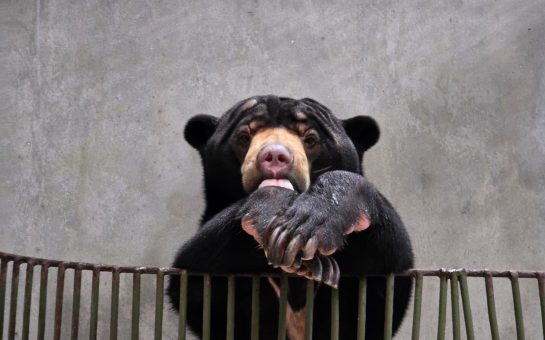Leading mountaineer and filmmaker David Breashears has summitted Mount Everest five times and received four National Emmy Awards.
A new Himalayan exhibition is now open at the Royal Geographical Society in Kensington after being launched by a leading mountaineer and filmmaker.
David Breashears, 56, has summitted Mount Everest five times and received four National Emmy Awards for achievements in filmmaking.
Rivers Of Ice: Vanishing Glaciers of the Greater Himalaya uses breathtaking images taken over the past century to reveal the alarming loss of ice in the region.
The exhibition displays modern day photographs alongside several taken by Himalayan pioneers such as Major E.O. Wheeler and George Mallory, who famously perished on Everest.
Mr Breashears is Executive Director of exhibition organisers GlacierWorks, a non-profit organisation which has undertaken eight Himalayan expeditions since 2007 to raise awareness of the problem.
The American explorer opened the exhibit with a guest lecture last week in which he also presented detailed interactive photographs of the Himalaya, captured with state of the art technology.

David Breashears and Mingmar Dorji Sherpa (Courtesy of GlacierWorks 2007)
Working with xRez Studio, pioneers in the field of gigapixel photography, hyper-detailed pictures were used to create panoramic images of the region, which can be interacted with online.
“Our project is about art, science and exploration and this technology is just a tool to get people interested in the region,” said Mr Breashears at the lecture.
“This is very compelling imagery that will make people want to learn so much more about their world.”

Balti porters trekking in the Everest region (courtesy of GlacierWorks 2009)
Audience members gasped as photographs were manipulated onscreen, with miles of terrain examined instantly in microscopic levels of detail.
The stunning panoramas were created through software developed in association with Microsoft and MIT and Mr Breashears claimed it is the future of teaching.
He said: “There will be so many layers of potential that people will be able to explore in so much detail.”
Historical images in the exhibition were taken from the RGS’s extensive collection of over 500,000 photographs, giving a new level of access to their archives.
Alasdair Macleod, Head of Enterprise and Resources at the RGS, said that the new technology can augment an audience’s appreciation of traditional imagery.
He said: “The technology greatly enhances our understanding of the landscape and breathes new life and relevance into those photographs taken nearly a century ago.
“As an educational tool, the opportunities are limitless.”
The exhibition is a transatlantic affair, with GlacierWorks working closely with Twickenham based company Sally Stiff Exhibition Design.

The Kumbu Glacier panorama (courtesy of GlacierWorks)
Designers Sally Smith and Edward Keeble collaborated with the RGS and GlacierWorks to create a suitable thematic backdrop for the dramatic photography.
Ms Smith said: “The structure tries to reflect the subject and we had to find a suitable way to try and display the photographs of the mountains.
“It replicates the different heights and slopes. We tried to build in the richness of the story into the whole exhibition.”
Mr Keeble added: “We actually created mountain like structures to show off the photographs.
“It’s a little bit like being in an actual mountain range. The stands are different heights, you turn corners and see different vistas and it’s very much reflective of the theme.”

The East Rongbuk Glacier (courtesy of Royal Geographical Society, 1921)
The exhibition is part of GlacierWorks’ efforts to promote awareness of the issue and encourage people to learn more about the problems of melting glacial ice.
The Greater Himalaya has almost 35,000 square kilometres of glacial coverage, the largest concentration of glaciers outside the polar ice sheets.
Seasonal glacial runoff supplies many of the major rivers in Asia, with the Ganges, Brahmaputra, Irrawaddy and Yangtze rivers all fed by Himalayan glaciers.
But as thousands of these glaciers begin to melt, hundreds of millions of people who depend on these river systems for drinking water and irrigation could be disrupted.
Potential water shortages could threaten food supplies and as population pressures increase in the region, competition for water will be amplified.

Major O.E. Wheeler (courtesy of Royal Geographical Society)
Glacial melting in the Himalayas is also indicative of the wider issues of global climate change, and GlacierWorks believe their project could inspire the next generation of geographical scientists.
Mr Breashears said: “We believe that letting people see the unseen will allow them to gain a serious appreciation of the subject.
“These are the people that we want to start studying the region and to start changing the world.”
Rivers of Ice continues at the RGS until Friday 11 November, is open Monday to Friday (10am-5pm) and entry is free.
For further information on the exhibition and the work conducted by GlacierWorks, visit www.glacierworks.org




